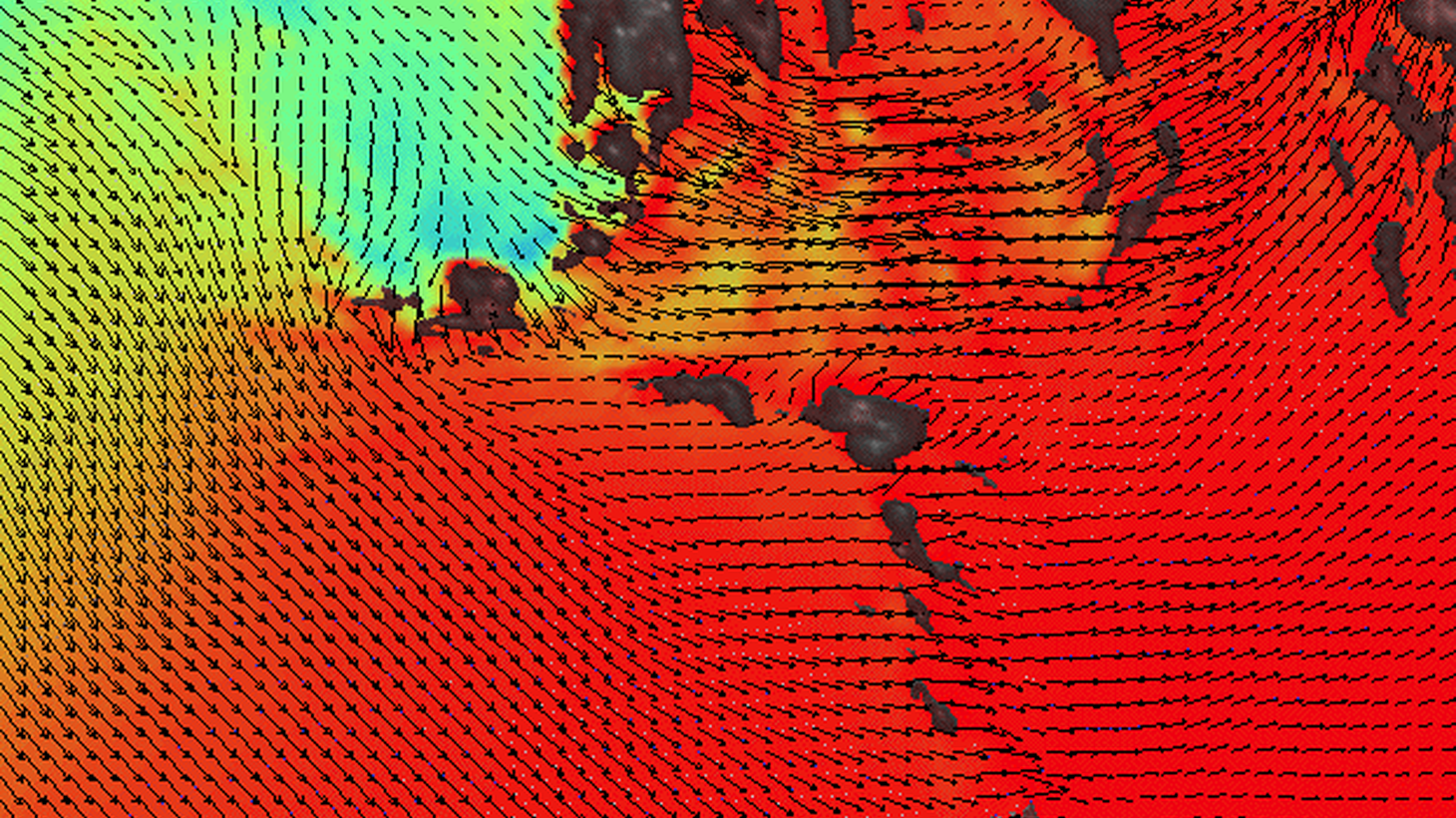It’s been dry and windy because of those mysterious warm winds from the east. The famous Santa Anas are back.
“The Santa Anas are really a rather defining phenomenon in our area,” said Robert Fovell, who studies the Santa Anas at UCLA.
 From September through right about now, you know there’s a Santa Ana when you feel that warm, gusty wind; you have to constantly apply hand lotion and you get shocked every time you open a car door.
From September through right about now, you know there’s a Santa Ana when you feel that warm, gusty wind; you have to constantly apply hand lotion and you get shocked every time you open a car door.
“People think it’s a hot wind that blows out of the desert and it’s blowing because the desert is hot,” Fovell said. “But basically the Santa Ana winds blow when the desert is cold.”
If the temperature in the high desert and beyond is colder and denser than the temperature on this side of the mountains, it’s a set-up for a Santa Ana. Cold air sloshes across the Great Basin. It basically gets up to the San Gabriels and the San Bernardino Mountains and much of it is basically held back, like a dam. So that’s actually increasing the pressure difference. And then that air finds its way through the Soledad Gap, through the Cajon Pass, and that sets up these wind corridors of relatively fast wind.
But why is the wind hot and dry? When the cold air mass comes into Southern California, it’s forced through the passes and canyons it’s descending. And as it’s descending it becomes hotter and then as the temperature goes up the relative humidity goes down and it goes down very fast.
In fact, air gets 30 degrees hotter for every mile it descends. As air moves down, it’s put under more pressure from the increasing amount of air above it, and more pressure means more heat and also less humidity.
Which explains why the hottest day in LA history was not in summer but during a Santa Ana in late September two years ago.
Santa Ana winds can also pose a serious risk after the dry summer months. Wild brush is like kindling from hell and all it takes is a spark to start a serious fire. “They are the most aggressive fire fight that we will be in,” said Los Angeles County Fire Captain Drew Smith. He said that when a fire starts, the fierce wind moves it really fast and throws embers through the air to start new fires up to two miles away.
The fact that we’re moving closer and closer to wildlands is adding one more big variable. Getting people out of their neighborhoods while moving fire equipment in can be a logistical nightmare in the chaos caused by a fast-moving, wind-driven fire.
“We found a statistically significant reduction in the number of Santa Ana days per winter. In the climate change simulation, both the desert and the ocean warmed but the desert warmed more than the air over the ocean,” said Mimi Hughes, research scientist at the University of Colorado.
Hughes admits their small study is far from conclusive, but what they found is that in a global warming scenario, both the sea and the desert would heat up, but the desert warmed more. And it stands to reason that if Santa Anas are caused by the difference in temperature between the desert and the sea, and if there’s a less of a difference between the two, there will be fewer Santa Anas.
But don’t put the hand lotion away just yet. Hughes did say that deserts are going to heat up, and a warmer desert means hotter Santa Anas. We’re still going to have them, and when we do have them, they’ll be hotter and drier than they already are which makes them even more intolerable and worse for fire.
This was originally posted in April, 2013. But we’re bringing it back because the winds are blowing again.

